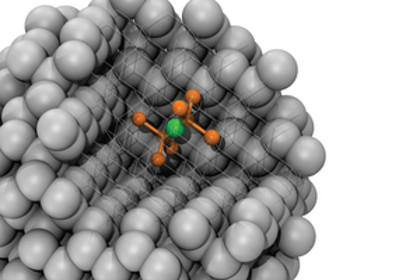Nano Silicon (PhD Nano _ Microelectronics)
Researcher and author: Dr. ( Afshin Rashid)
Note: Nanoparticles or nanopowders are highly spherical metal particles. Nanosilicon particles are usually present in 5-25 nm (nm). With an average particle size of 80 -100 nm range with a specific surface area of about 5-10 m 2 / g deposition of thin films of silicon nanoparticles, quantum dots on silicon substrate polycrystalline photovoltaic cells (solar) by inhibiting the incoming light before recording, the output voltage Increases by up to 60%.
Silicon nanoparticles are also available in ultra-high purity and carbon and dispersible coatings. They are also available in dispersion via nanofluids. Nanofluids are generally defined as nanoparticles suspended in solution using either surfactant or charge surface technology.
Silicon nanoparticles (Si NPs) have attracted attention due to their unique optoelectronic properties as well as stable and diverse chemistry . The advantages of silicon nanoparticles include their high natural abundance and non-biological toxicity. Silicones are a very useful and prolific group for various polymers. These materials have interesting properties at high and low temperatures. They have good resistance to weather conditions such as humidity and light andretaintheir rubber properties up to 260 to 315 degrees Celsius. In general, nanomaterials can be defined as materials that have at least one external dimension with a size of 1-100 nanometers. A definition of Nano Material can be given as follows Particle size At least half of the particles in the number size distribution must be 100 nm or less. Nanomaterials can occur naturally, be generated as by-products of combustion reactions, or be purposefully engineered to perform a specific function. These materials can have different physical and chemical properties than their bulk or natural samples.
Conclusion :
Nanoparticles or nanopowders are highly spherical metal particles. Nanosilicon particles are usually present in 5-25 nm (nm).
Researcher and author: Dr. ( Afshin Rashid)
PhD in Nano-Microelectronics



